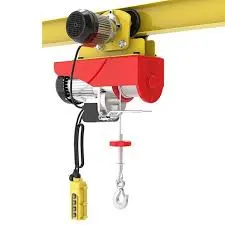


Understanding the Hanging Scale A Practical Tool for Everyday Use
In our modern world, where technology continuously advances, weighing items remains a fundamental task in various fields, ranging from cooking to scientific research. One essential device that has stood the test of time is the hanging scale, a versatile and practical tool that offers accurate measurements for both heavy and light items. This article delves into the features, uses, and advantages of hanging scales, highlighting why they remain relevant today.
A hanging scale, also known as a balance scale or hook scale, typically consists of a platform or hook where the item to be weighed is suspended, a graduated scale displaying weight measurements, and a spring mechanism or digital sensor that captures the weight accurately. The simplicity of the design allows users to weigh goods effortlessly, making it ideal for various settings, including kitchens, butcher shops, markets, and laboratories.
One of the primary advantages of a hanging scale is its capacity to measure a broad range of weights. Unlike traditional flat scales, which may have weight limits, hanging scales can accommodate heavy items, such as large cuts of meat or bags of produce. This capability is particularly beneficial in professional environments, where accuracy and efficiency are crucial. Moreover, the suspended mechanism ensures that the weight is evenly distributed, reducing the risk of inaccuracies caused by uneven surfaces.

In addition to their practicality, hanging scales are highly portable. Many models are lightweight and compact, making them easy to transport from one place to another. This mobility is especially useful for people who work in various locations, such as farmers or market vendors. Instead of relying on bulky weighing equipment, individuals can carry a hanging scale conveniently, allowing for quick and easy measurements on the go.
Hanging scales come in both mechanical and digital varieties. Mechanical hanging scales use a spring mechanism to determine weight, and they are renowned for their reliability and simplicity. They do not require batteries or calibration, making them a favorite among those who prefer classic tools. On the other hand, digital hanging scales offer enhanced accuracy and ease of use, often featuring backlit displays for visibility in low-light conditions. Additionally, many digital models come equipped with memory functions, enabling users to record multiple weights or switch between units of measurement effortlessly.
When considering the applications of hanging scales, it is clear that their utility spans various industries. In the culinary world, chefs utilize them to ensure precise ingredient measurements, contributing to the perfect dish. In commercial settings, vendors depend on them to weigh goods quickly and efficiently, fostering customer satisfaction. Furthermore, scientists and researchers rely on hanging scales in laboratory environments to conduct experiments that require exact measurements.
In conclusion, the hanging scale is an invaluable tool that combines simplicity, accuracy, and versatility. Its ability to accommodate various weights and portability positions it as an essential device in numerous settings. Whether you are weighing ingredients in the kitchen or managing inventory in a warehouse, the hanging scale is a reliable companion that facilitates everyday tasks. As technology continues to evolve, the enduring design and functionality of the hanging scale remind us of the importance of practical tools in our day-to-day lives.



